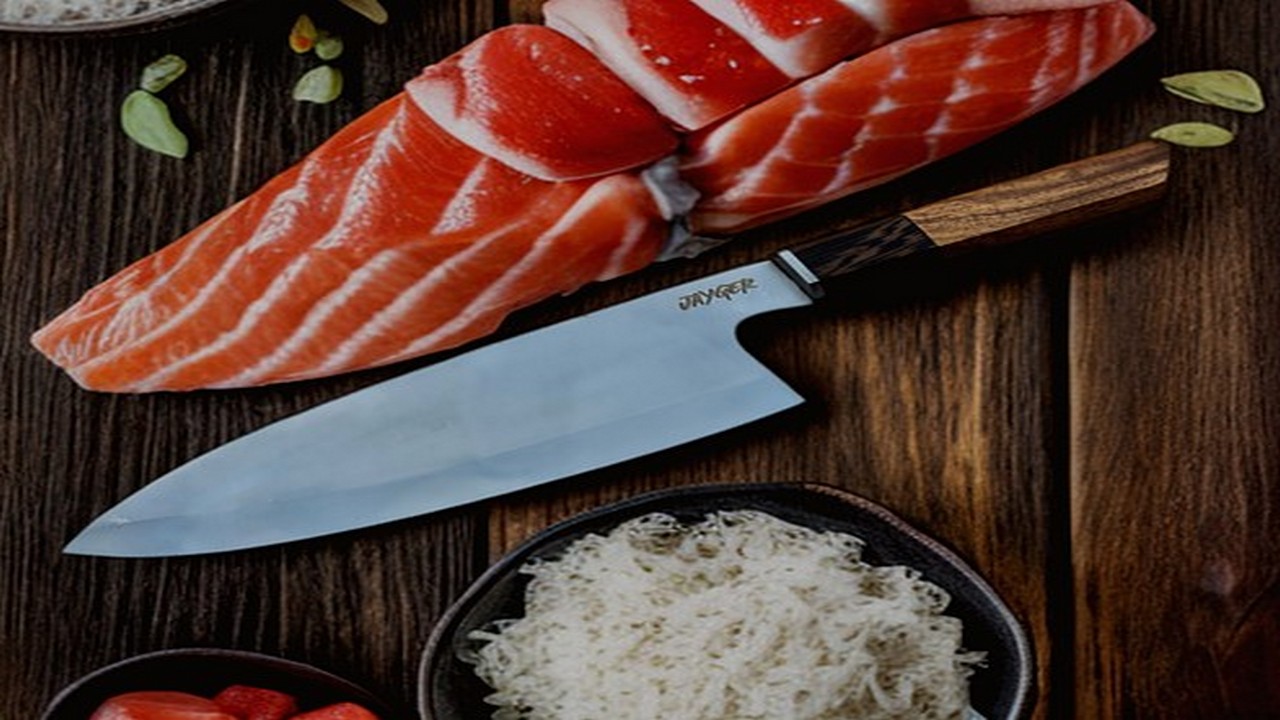Your Guide to Selecting the Ultimate Japanese Kitchen Knives

Looking to elevate your culinary skills? Look no further than a Japanese kitchen knife. Renowned for their exceptional quality and precision, these knives are a staple in any serious chef’s arsenal. But with so many options available, how do you choose the right one for you?
In this comprehensive guide, we’ll walk you through everything you need to know to select the ultimate Japanese kitchen knife. From understanding the different types of knives to considering the materials and construction, we’ll give you the expert advice you need to make an informed decision.
Whether you’re a professional chef or a home cook, we’ve got you covered. Our easy-to-read format breaks down the key factors to consider so you can find the perfect knife that fits your needs, preferences, and budget.
Join us on this journey as we explore the fascinating world of Japanese kitchen knives and discover how these masterpieces can revolutionize your cooking experience. Get ready to slice, dice, and julienne with precision and style!
Types of Japanese knife
Japanese kitchen knives come in a variety of types, each designed for specific tasks. Understanding the different types will help you choose the right knife for your needs.
Gyuto: The Gyuto knife is the Japanese equivalent of a Western chef’s knife. It has a versatile design, suitable for various cutting techniques, such as slicing, dicing, and chopping. The Gyuto knife typically has a thin, sharp blade and a pointed tip, making it ideal for precision tasks.
Santoku: The Santoku knife is another popular Japanese knife. It has a shorter, wider blade compared to the Gyuto, with a flat edge and a rounded tip. The Santoku knife excels at slicing, dicing, and mincing, making it a versatile choice for everyday cooking.
Deba: The Deba knife is a traditional Japanese knife used for filleting and butchering fish. Its thick, heavy blade allows for precise cuts through fish bones and tough skin. The Deba knife is a must-have for sushi chefs and seafood lovers.
Nakiri: The Nakiri knife is a vegetable knife, perfect for slicing and dicing vegetables with ease. It has a straight, double-edged blade, allowing for efficient chopping and precise cuts. If you frequently prepare salads and stir-fries, the Nakiri knife is a great addition to your kitchen.
Yanagiba: The Yanagiba knife is a long, thin knife used primarily for slicing raw fish for sashimi and sushi. Its single-edged blade allows for clean cuts without tearing the delicate texture of the fish. If you’re passionate about Japanese cuisine and enjoy preparing sushi at home, the Yanagiba knife is a must-have.
Usuba: The Usuba knife is another vegetable knife, similar to the Nakiri knife. However, it has a single-edged blade, making it ideal for precise, thin cuts. The Usuba knife is commonly used in traditional Japanese cuisine for delicate vegetable work.
Kiritsuke: The Kiritsuke knife is a versatile, multipurpose knife that combines the functionalities of a Gyuto and a Yanagiba knife. It has a long, thin blade with a pointed tip, allowing for a wide range of cutting techniques. The Kiritsuke knife is often used by professional chefs who require a single knife for various tasks.
When selecting a Japanese kitchen knife, consider the tasks you frequently perform in the kitchen and choose a knife that suits your needs. A well-chosen knife will not only enhance your cooking experience but also make your culinary creations more precise and effortless.
Factors to consider when choosing a Japanese knife
Choosing the right Japanese kitchen knife is crucial for several reasons:
- A high-quality knife will ensure efficient and precise cutting, saving you time and effort in the kitchen.
- A well-balanced knife that feels comfortable in your hand will reduce the risk of accidents and injuries.
- Investing in a durable and long-lasting knife will save you money in the long run, as you won’t need to replace it frequently.
When selecting a Japanese kitchen knife, consider the following factors:
Blade Material: Japanese kitchen knives are typically made from high-carbon steel or stainless steel. High-carbon steel offers superior sharpness and edge retention but requires more maintenance. Stainless steel is more resistant to corrosion and easier to maintain. Choose a blade material that aligns with your preferences and maintenance routine.
Blade Construction: Japanese kitchen knives can have either a single bevel or a double bevel. Single bevel knives are sharpened on one side only, allowing for precise cuts but requiring more skill to use. Double bevel knives have a sharpened edge on both sides, making them more versatile and easier to handle for beginners.
Handle: The handle of a Japanese kitchen knife can be made from various materials, such as wood, plastic, or composite materials. Consider the grip, comfort, and durability of the handle when making your choice. Some handles may require regular maintenance, such as oiling, to prevent drying and cracking.
Price: Japanese kitchen knives can range in price from affordable options to high-end, handmade masterpieces. Set a budget that suits your needs and explore options within that range. Remember that a higher price doesn’t always guarantee better quality, so do your research and read reviews before making a purchase.
By considering these factors, you can select a Japanese kitchen knife that not only meets your cooking needs but also enhances your overall culinary experience. A well-chosen knife will become an extension of your hand, allowing you to unleash your creativity in the kitchen.
Differentiating between Western and Japanese Chef knives
When comparing Japanese kitchen knives to their Western counterparts, there are a few key differences to keep in mind. Understanding these differences will help you make an informed decision when selecting your knife.
Blade Shape: Japanese kitchen knives typically have a thinner and lighter blade compared to Western knives. This allows for precise cuts and less resistance when slicing through ingredients. Western knives, on the other hand, have thicker blades, making them more suitable for heavy-duty tasks and cutting through tougher ingredients.
Blade Hardness: Japanese kitchen knives are known for their exceptional hardness. The high carbon content in the steel used for Japanese knives allows for a sharper edge and better edge retention. However, this also makes the blade more brittle and susceptible to chipping if not handled with care. Western knives may have a slightly lower hardness, but they offer more durability and resilience.
Cutting Technique: Japanese kitchen knives are designed for precise, delicate cuts using a pulling motion. The sharpness of the blade allows for effortless slicing and dicing. Western knives, on the other hand, are designed for more forceful cutting, using a rocking motion. They are better suited for tasks that require more power, such as chopping through bones and tougher ingredients.
Handle Design: Japanese kitchen knives traditionally have a handle that is made from wood and is more streamlined and lightweight compared to Western knives. Western knives often have handles made from materials like plastic or stainless steel, providing a sturdier grip. The handle design is a matter of personal preference, so choose one that feels comfortable in your hand.
When deciding between a Japanese and a Western kitchen knife, consider your cooking style, preferred cutting techniques, and the types of ingredients you frequently work with. Both types of knives have their strengths and can complement each other in the kitchen.
Where to buy Japanese kitchen knives
Now that you have a good understanding of the different types of Japanese kitchen knives and the factors to consider, you may be wondering where to buy them. Here are some options to explore:
Specialty Knife Stores: Visit a dedicated knife store where you can see and feel the knives in person. The staff at these stores are usually knowledgeable and can provide guidance based on your needs.
Online Retailers: Many online retailers, such as Jayger, specialize in Japanese kitchen knives. They offer a wide range of options and often provide detailed product descriptions and customer reviews to help you make an informed decision.
Culinary Expos and Trade Shows: Attend culinary expos and trade shows where you can interact with knife makers and vendors. This allows you to see the craftsmanship firsthand and ask questions directly.
When purchasing a Japanese kitchen knife, it’s essential to buy from reputable sources to ensure you’re getting an authentic, high-quality knife. Look for reviews and recommendations, and don’t hesitate to reach out to experts for advice.
Care and maintenance of Japanese kitchen knives
To ensure the longevity and performance of your Japanese kitchen knife, proper care and maintenance are essential. Follow these tips to keep your knife in optimal condition:
Handwashing: Always handwash your Japanese kitchen knife with warm, soapy water immediately after use. Avoid soaking it in water or putting it in the dishwasher, as this can damage the blade and handle.
Drying: Thoroughly dry your knife with a clean towel after washing to prevent moisture from causing rust or corrosion. Pay extra attention to the area where the blade meets the handle, as water can accumulate there.
Storage: Store your Japanese kitchen knife in a knife block, knife sheath, or on a magnetic strip. Avoid storing it in a drawer with other utensils, as this can lead to accidental damage or dulling of the blade.
Sharpening: Regularly sharpen your knife to maintain its sharpness. You can use a whetstone or a sharpening rod designed for Japanese knives. If you need more clarification on sharpening techniques, consider taking your knife to a professional for sharpening.
Honing: Use a honing rod to realign the edge of the blade between sharpening sessions. This will help maintain the sharpness and prolong the time between sharpenings.
Oil the Blade: If your knife has a carbon steel blade, consider applying a thin layer of food-grade mineral oil to protect it from rust. Follow the manufacturer’s instructions on oiling and maintenance.
By following these care and maintenance practices, your Japanese kitchen knife will continue to serve you well for years to come. Remember, a well-maintained knife is not only safer to use but also performs at its best.
